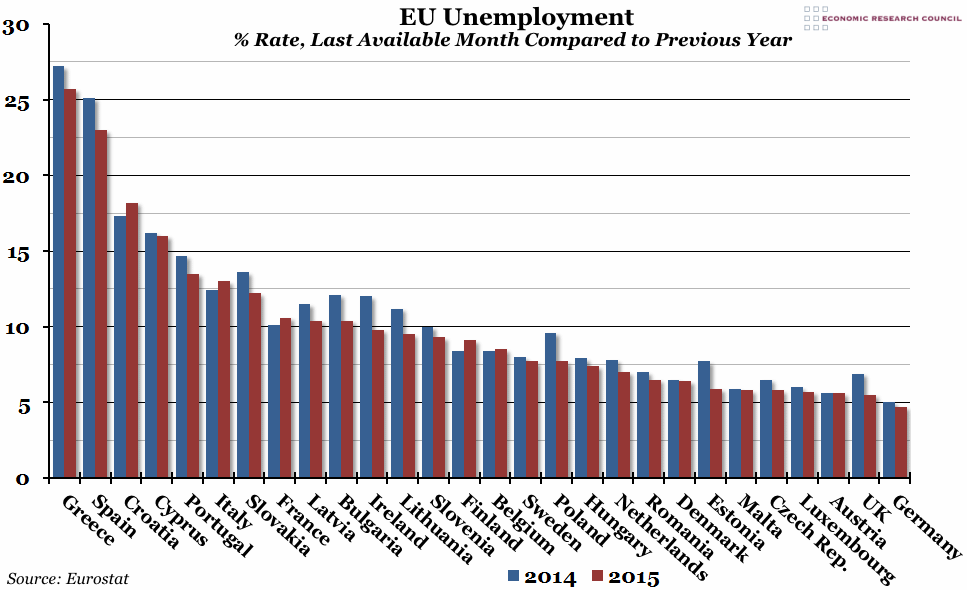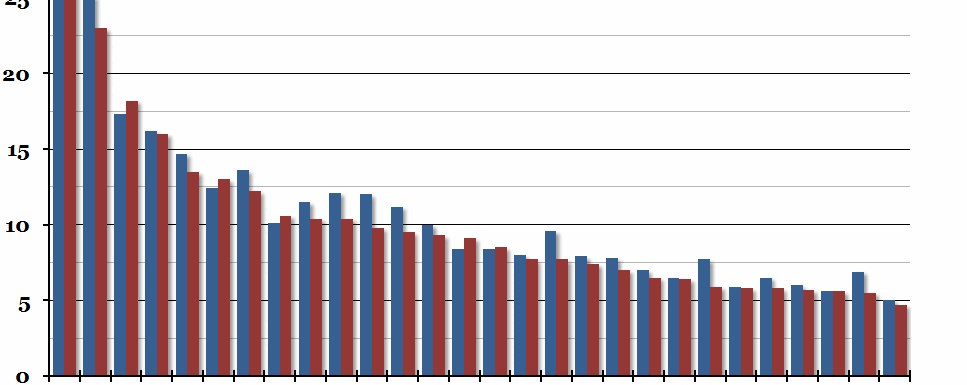
Summary
Eurostat released the latest unemployment figures for the EU at the end of last week, and the headline rate remained at 9.8% for the whole of the first quarter of this year (down from 10.4% in March 2014). Youth unemployment was also down on last year, falling from 22.8% to 20.9%. This week’s chart shows the annual change in unemployment rate for each of the 28 constituent countries.
What does the chart show?
The chart shows the unemployment rate (in %) for each of the 28 EU countries. The red bar shows the latest available monthly figure (March 2015 for most of them; February for Estonia and Hungary; January for Greece and the UK; and December for Latvia). The blue bar shows the figure for the same period a year ago. Eurostat defines the unemployment rate as the percentage of the labour force aged between 15-74 (ie. all those in work or currently looking for work) who are currently unemployed (ie. are without work, are available to start work within the next two weeks, and have actively sought employment at some point in the last four weeks).
Why is the chart interesting?
For most EU countries, unemployment is falling. The average annual decrease was 0.7 percentage points. The UK has done exceptionally well over that period, falling from 6.9% to 5.5% (double the average improvement), and this has seen the UK climb up from 7th to 2nd place, behind only Germany. As a proportion of the 2014 unemployment rate, only Estonia and Poland experienced a greater improvement.
The two outliers, Greece and Spain, have also been steadily reducing their unemployment rates, although they are still unacceptably high (Greece’s unemployment rate is more than five times that of Germany, for example). Only a handful of countries have seen an increase in their unemployment rate over the period, including Croatia, Finland, Belgium, and more noticeably, France and Italy. France’s decline is partularly shocking, as they have fallen from 17th to 21st, behind Latvia, Lithuania, Bulgaria and Ireland (who have all seen significant improvements).

